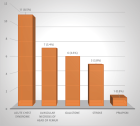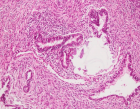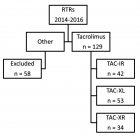Abstract
Mini Review
The Inverse Relationship between Acute Myocardial Infarction and Dissolved Oxygen Levels in Water
Arturo Solís Herrera*, María del Carmen Arias Esparza and Ruth Isabel Solís Arias
Published: 07 February, 2025 | Volume 9 - Issue 1 | Pages: 013-023
Stroke and acute myocardial infarction are primary global causes of mortality. Statistical studies have shown that acute myocardial infarction is responsible for around 9 million deaths each year. Ischemic stroke and myocardial infarction have a significant role in global adult physical disabilities. While reperfusion is vital for tissue recovery, it may paradoxically, inadvertently increase damage through oxidative stress, inflammation, and cell death. Early reperfusion procedures are currently the sole therapy to reduce infarct size.
There are many mysteries about heart biology. It is not known the source of energy for myocardial tissues. The heart-beating force (120 mm Hg) cannot explain how erythrocytes are impelled through almost 95,000 km of capillaries in less than 5 minutes. A better knowledge of how the heart is oxygenated should allow the development of new therapies.
Read Full Article HTML DOI: 10.29328/journal.jnpr.1001066 Cite this Article Read Full Article PDF
Keywords:
Dissociation; Heart; Hydrogen; Ischemic; Myocardial; Reperfusion; Oxygen; Water
References
- Ojha N, Dhamoon AS. Myocardial Infarction. 2023 Aug 8. In: StatPearls [Internet]. Treasure Island (FL): StatPearls Publishing. 2025. Available from: https://www.ncbi.nlm.nih.gov/books/NBK537076/
- Chang J, Deng Q, Hu P, Guo M, Lu F, Su Y, et al. Geographic Variation in Mortality of Acute Myocardial Infarction and Association With Health Care Accessibility in Beijing, 2007 to 2018. J Am Heart Assoc. 2023 Jun 20;12(12):e029769. Available from: https://doi.org/10.1161/jaha.123.029769
- Piccard M, Roussot A, Cottenet J, Cottin Y, Zeller M, Quantin C. Spatial distribution of in- and out-of-hospital mortality one year after acute myocardial infarction in France. Am J Prev Cardiol. 2020;2:100037. Available from: https://doi.org/10.1016/j.ajpc.2020.100037
- Ministry of Health. Drinking Water in France 2005–2006. 2008;63. [cited 20 Nov 2017]. Available from: http://solidarites-sante.gouv.fr/IMG/pdf/bilanqualite_05_06.pdf
- 2020. [retrieved: January 27, 2025]. Available from: https://www.efsa.europa.eu/en/news/pfas-food-efsa-assesses-risks-and-sets-tolerable-intake
- Lacalamita D, Mongiovi C, Frini G. Front. Environ. Sci., 07 Apr 2024, Sec. Water and Wastewater Management. 2024;12. Available from: https://doi.org/10.3389/fenvs.2024.1387041
- Sibil R, Berkun M, Bekiroglu S. The comparison of different mathematical methods to determine the BOD parameters, a new developed method and impacts of these parameters variations on the design of WWTPs. Appl Math Model. 2014;38:641-658. Available from: https://doi.org/10.1016/j.apm.2013.07.013
- Yu B, Akushevich I, Yashkin AP, Yashin AI, Lyerly HK, Kravchenko J. Epidemiology of geographic disparities in heart failure among US older adults: a Medicare-based analysis. BMC Public Health. 2022;22(1):1280. Available from: https://doi.org/10.1186/s12889-022-13639-2
- World Population Review. Life expectancy by state 2020. 2020. [cited 6 Aug 2020]. Available from: https://worldpopulationreview.com/state-rankings/life-expectancy-by-state
- Yu B, Akushevich I, Yashkin A, Yashin A, Lyerly H, Kravchenko J. Heart failure mortality, incidence, prevalence, and survival in the United States: analysis of geographic disparities among older adults using Medicare data. In: Population Association of America Annual Meeting 2021. 2020. Available from: https://doi.org/10.1186/s12889-022-13639-2
- Centers for Disease Control and Prevention. Heart Failure. 2019. [cited 20 May 2020].
- University of Wisconsin, Population Health Institute. Louisiana, 2022, State Report. 2022 County Health Rankings for the 64 Ranked Parishes in Louisiana. Retrieved Jan 17, 2025. Available from: https://www.countyhealthrankings.org/sites/default/files/media/document/CHR2022_LA_0.pdf
- EPA Comptox Dashboard. [accessed Jan 23, 2025]. Available from: https://comptox.epa.gov/dashboard/chemical-lists/pfasmaster
- National Academies of Sciences, Engineering, and Medicine; Health and Medicine Division; Division on Earth and Life Studies; Board on Population Health and Public Health Practice; Board on Environmental Studies and Toxicology; Committee on the Guidance on PFAS Testing and Health Outcomes. Guidance on PFAS Exposure, Testing, and Clinical Follow-Up. Washington (DC): National Academies Press (US); 2022. Available from: https://www.ncbi.nlm.nih.gov/books/NBK584702/
- Silver M, Phelps W, Masarik K, Burke K, Zhang C, Schwartz A, et al. Prevalence and Source Tracing of PFAS in Shallow Groundwater Used for Drinking Water in Wisconsin, USA. Environ Sci Technol. 2023;57(45):17415-17426. Available from: https://pubs.acs.org/doi/10.1021/acs.est.3c02826
- Mueller R, Salvatore D, Brown P, Cordner A. Quantifying Disparities in Per- and Polyfluoroalkyl Substances (PFAS) Levels in Drinking Water from Overburdened Communities in New Jersey, 2019-2021. Environ Health Perspect. 2024;132(4):47011. Available from: https://doi.org/10.1289/ehp12787
- Agyeman J, Schlosberg D, Craven L, Matthews C. Trends and directions in environmental justice: from inequity to everyday life, community, and just sustainabilities. Annu Rev Environ Resour. 2016;41(1):321–340. Available from: https://doi.org/10.1146/annurev-environ-110615-090052
- Solís Herrera A, Arias Esparza MdC. Oxygen from the Atmosphere Cannot Pass Through the Lung Tissues and Reach the Bloodstream. The Unexpected Capacity of Human Body to Dissociate the Water Molecule. J Pulmonol Res Rep. 2022;SRC/JPRR-133. Available from: https://www.onlinescientificresearch.com/abstract/oxygen-from-the-atmosphere-cannot-pass-through-the-lung-tissues-and-reach-the-bloodstream-the-unexpected-capacity-of-human-body-to-1804.html
- Karnkowska A, Vacek V, Zubáčová Z, Treitli SC, Petrželková R, Eme L, et al. A Eukaryote without a Mitochondrial Organelle. Curr Biol. 2016;26(10):1274–1284. Available from: https://doi.org/10.1016/j.cub.2016.03.053
- Solís Herrera A. The Biological Pigments in Plants Physiology. Agric Sci. 2015;6(6):1262–1271. Available from: https://www.scirp.org/journal/paperinformation?paperid=60724
- West JB. Three classical papers in respiratory physiology by Christian Bohr (1855-1911) whose work is frequently cited but seldom read. Am J Physiol Lung Cell Mol Physiol. 2019;316(4):L585-L588. Available from: https://doi.org/10.1152/ajplung.00527.2018
- Ingwall JS. ATP and the Heart. Norwell, Massachusetts: Kluwer Academic Publishers. 2002. Available from: https://link.springer.com/book/10.1007/978-1-4615-1093-2
- Suga H. Ventricular energetics. Physiol Rev. 1990;70:247–277. Available from: https://doi.org/10.1152/physrev.1990.70.2.247
- Beer M, Seyfarth T, Sandstede J, Landschütz W, Lipke C, Köstler H, et al. Absolute concentrations of high-energy phosphate metabolites in normal, hypertrophied, and failing human myocardium measured noninvasively with (31)P-SLOOP magnetic resonance spectroscopy. J Am Coll Cardiol. 2002;40:1267–1274. Available from: https://doi.org/10.1016/S0735-1097(02)02160-5
- Wisneski JA, Gertz EW, Neese RA, Gruenke LD, Craig JC. Dual carbon-labeled isotope experiments using D-[6-14C] glucose and L-[1,2,3-13C3] lactate: a new approach for investigating human myocardial metabolism during ischemia. J Am Coll Cardiol. 1985;5:1138–1146. Available from: https://doi.org/10.1016/s0735-1097(85)80016-4
- Ward PS, Thompson CB. Signaling in control of cell growth and metabolism. Cold Spring Harb Perspect Biol. 2012;4:a006783. Available from: https://doi.org/10.1101/cshperspect.a006783
- Lopez R, Marzban B, Gao X, Lauinger E, Van den Bergh F, Whitesall SE, et al. Impaired Myocardial Energetics Causes Mechanical Dysfunction in Decompensated Failing Hearts. Function. 2020. Available from: https://doi.org/10.1093/function/zqaa018
- Wu F, Zhang EY, Zhang J, Bache RJ, Beard DA. Phosphate metabolite concentrations and ATP hydrolysis potential in normal and ischaemic hearts. J Physiol. 2008;586(17):4193–4208. Available from: https://doi.org/10.1113/jphysiol.2008.154732
- Holzem KM, Vinnakota KC, Ravikumar VK, Madden EJ, Ewald GA, Dikranian K, et al. Mitochondrial structure and function are not different between nonfailing donor and end-stage failing human hearts. FASEB J. 2016;30(8):2698–2707. Available from: https://doi.org/10.1096/fj.201500118r
- Cordero-Reyes AM, Gupte AA, Youker KA, Loebe M, Hsueh WA, Torre-Amione G, et al. Freshly isolated mitochondria from failing human hearts exhibit preserved respiratory function. J Mol Cell Cardiol. 2014;68:98–105. Available from: https://doi.org/10.1016/j.yjmcc.2013.12.029
- Stride N, Larsen S, Hey-Mogensen M, Sander K, Lund JT, Gustafsson F, et al. Decreased mitochondrial oxidative phosphorylation capacity in the human heart with left ventricular systolic dysfunction. Eur J Heart Fail. 2013;15(2):150–157. Available from: https://doi.org/10.1093/eurjhf/hfs172
- Hirsch GA, Bottomley PA, Gerstenblith G, Weiss RG. Allopurinol acutely increases adenosine triphospate energy delivery in failing human hearts. J Am Coll Cardiol. 2012;59:802–808. Available from: https://doi.org/10.1016/j.jacc.2011.10.895
- Struthers AD, Donnan PT, Lindsay P, McNaughton D, Broomhall J, MacDonald TM. Effect of allopurinol on mortality and hospitalisations in chronic heart failure: a retrospective cohort study. Heart. 2002;87:229–234. Available from: https://doi.org/10.1136/heart.87.3.229
- Yusuf S, Dagenais G, Pogue J, Bosch J, Sleight P. Vitamin E supplementation and cardiovascular events in high-risk patients: the Heart Outcomes Prevention Evaluation Study Investigators. N Engl J Med. 2000;342:154–160. Available from: https://doi.org/10.1056/nejm200001203420302
- Doenst T, Nguyen TD, Abel ED. Cardiac metabolism in heart failure: implications beyond ATP production. Circ Res. 2013;113(6):709–724. Available from: https://doi.org/10.1161/circresaha.113.300376
- Herrera AS, del Carmen Arias Esparza M, Solís Arias PE, Ávila-Rodriguez M, Barreto GE, Li Y, Bachurin SO, et al. Unsuspected Intrinsic Property of Melanin to Dissociate Water Can Be Used for the Treatment of CNS Diseases. CNS Neurol Disord Drug Targets. 2016;15(2):135-140. Available from: https://doi.org/10.2174/1871527315666160202122943
- Warren-Vega WM, Campos-Rodríguez A, Zárate-Guzmán AI, Romero-Cano LA. A current review of water pollutants in the American continent: trends and perspectives in detection, health risks, and treatment technologies. Int J Environ Res Public Health. 2023;20(5):4499. Available from: https://doi.org/10.3390/ijerph20054499
- Abily M, Acuña V, Corominas L, Rodríguez-Roda I, Gernjak W. Strategic routes for wastewater treatment plant upgrades to reduce micropollutants in European surface water bodies. J Clean Prod. 2023;415:137867. Available from: https://doi.org/10.1016/j.jclepro.2023.137867
- Rizzo L, Malato S, Antakyali D, Beretsou VG, Đolić MB, Gernjak W, et al. Consolidated vs new advanced treatment methods for the removal of contaminants of emerging concern from urban wastewater. Sci Total Environ. 2019;655:986–1008. Available from: https://doi.org/10.1016/j.scitotenv.2018.11.265
- Kanazawa S. Temperature and evolutionary novelty as forces behind the evolution of general intelligence. Intelligence. 2008;36(2):99–108. Available from: https://www.sciencedirect.com/science/article/pii/S0160289607000669
Figures:
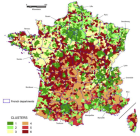
Figure 1

Figure 2

Figure 3
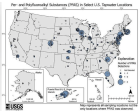
Figure 4

Figure 5
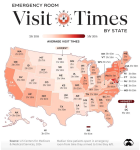
Figure 6

Figure 7

Figure 8
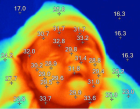
Figure 9
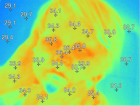
Figure 10

Figure 11

Figure 12

Figure 13
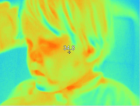
Figure 14

Figure 15

Figure 16
Similar Articles
-
Postural Stability Induced by Supervised Physical Training may improve also Oxygen Cost of Exercise and Walking Capacity in Post-Menopause, Obese WomenFernanda Velluzzi,Massimiliano Pau,Andrea Loviselli,Raffaele Milia,Daniela Lai,Daniele Concu,Gianmarco Angius,Abdallah Raweh,Andrea Fois,Alberto Concu*. Postural Stability Induced by Supervised Physical Training may improve also Oxygen Cost of Exercise and Walking Capacity in Post-Menopause, Obese Women. . 2017 doi: 10.29328/journal.jnpr.1001001; 1: 001-011
-
Effects of Fast-Walking on Muscle Activation in Young Adults and Elderly PersonsCamila Fonseca de Oliveira*,Denise Paschoal Soares,Michel Christian Bertani,Leandro José Rodrigues Machado,João Paulo Vila-Boas. Effects of Fast-Walking on Muscle Activation in Young Adults and Elderly Persons. . 2017 doi: 10.29328/journal.jnpr.1001002; 1: 012-019
-
Influence of an integrated rehabilitative treatment on the modification of body representation in patients affected by Unilateral Spatial NeglectMaurizio Falso*,Michela Delpero,Eleonora Cattaneo. Influence of an integrated rehabilitative treatment on the modification of body representation in patients affected by Unilateral Spatial Neglect. . 2018 doi: 10.29328/journal.jnpr.1001023; 2: 087-100
-
Neuroanatomical profile of hemineglect in patient’s body image modificationMaurizio Falso*,Eleonora Cattaneo Psy. Neuroanatomical profile of hemineglect in patient’s body image modification. . 2020 doi: 10.29328/journal.jnpr.1001029; 4: 001-008
-
The real-time information provision problem in assessing rehabilitation needs among athletes with overtraining syndromePanagiotis Katrakazas. The real-time information provision problem in assessing rehabilitation needs among athletes with overtraining syndrome. . 2022 doi: 10.29328/journal.jnpr.1001044; 6: 009-010
-
Cardiovascular Response to Head Down Crooked Kneeling Position Among Type 2 Diabetic PatientSumbal Javed, Muhammad Faizan Hamid*, Ahsan Javed, Javaria Azeem, Jawad Ahmad, Eeraj Chaudhry. Cardiovascular Response to Head Down Crooked Kneeling Position Among Type 2 Diabetic Patient. . 2023 doi: 10.29328/journal.jnpr.1001054; 7: 035-038
-
The Fundamental Role of Dissolved Oxygen Levels in Drinking Water, in the Etiopathogenesis, Prevention, Treatment and Recovery of Cerebral Vascular Events (Stroke)Arturo Solís Herrera*. The Fundamental Role of Dissolved Oxygen Levels in Drinking Water, in the Etiopathogenesis, Prevention, Treatment and Recovery of Cerebral Vascular Events (Stroke). . 2025 doi: 10.29328/journal.jnpr.1001064; 9: 001-006
-
Insights into the Complexity of Paradoxical Antioxidants Behavior. And the Reasons for it’s almost Zero or no Effect on StrokeArturo Solís Herrera*,María del Carmen Arias Esparza,Sergey Suchkov. Insights into the Complexity of Paradoxical Antioxidants Behavior. And the Reasons for it’s almost Zero or no Effect on Stroke. . 2025 doi: 10.29328/journal.jnpr.1001065; 9: 007-012
-
The Inverse Relationship between Acute Myocardial Infarction and Dissolved Oxygen Levels in WaterArturo Solís Herrera*,María del Carmen Arias Esparza,Ruth Isabel Solís Arias. The Inverse Relationship between Acute Myocardial Infarction and Dissolved Oxygen Levels in Water. . 2025 doi: 10.29328/journal.jnpr.1001066; 9: 013-023
Recently Viewed
-
FITT-CORRECT: Updated dynamic and evidence-based principle of exercise prescriptionShambhu P Adhikari*,Jarugool Tretriluxana,Rubee Dev,Emily Eglitis,Nistha Shrestha,Cheryl Kerfeld6. FITT-CORRECT: Updated dynamic and evidence-based principle of exercise prescription. J Nov Physiother Rehabil. 2021: doi: 10.29328/journal.jnpr.1001039; 5: 005-009
-
Cystoid Macular Oedema Secondary to Bimatoprost in a Patient with Primary Open Angle GlaucomaKonstantinos Kyratzoglou*,Katie Morton. Cystoid Macular Oedema Secondary to Bimatoprost in a Patient with Primary Open Angle Glaucoma. Int J Clin Exp Ophthalmol. 2025: doi: 10.29328/journal.ijceo.1001059; 9: 001-003
-
Sex after Neurosurgery–Limitations, Recommendations, and the Impact on Patient’s Well-beingMor Levi Rivka*, Csaba L Dégi. Sex after Neurosurgery–Limitations, Recommendations, and the Impact on Patient’s Well-being. J Neurosci Neurol Disord. 2024: doi: 10.29328/journal.jnnd.1001099; 8: 064-068
-
Physiotherapy Undergraduate Students’ Perception About Clinical Education; A Qualitative StudyPravakar Timalsina*,Bimika Khadgi. Physiotherapy Undergraduate Students’ Perception About Clinical Education; A Qualitative Study. J Nov Physiother Rehabil. 2024: doi: 10.29328/journal.jnpr.1001063; 8: 043-052
-
Clinical Significance of Anterograde Angiography for Preoperative Evaluation in Patients with Varicose VeinsYi Liu,Dong Liu#,Junchen Li#,Tianqing Yao,Yincheng Ran,Ke Tian,Haonan Zhou,Lei Zhou,Zhumin Cao*,Kai Deng*. Clinical Significance of Anterograde Angiography for Preoperative Evaluation in Patients with Varicose Veins. J Radiol Oncol. 2025: doi: 10.29328/journal.jro.1001073; 9: 001-006
Most Viewed
-
Evaluation of Biostimulants Based on Recovered Protein Hydrolysates from Animal By-products as Plant Growth EnhancersH Pérez-Aguilar*, M Lacruz-Asaro, F Arán-Ais. Evaluation of Biostimulants Based on Recovered Protein Hydrolysates from Animal By-products as Plant Growth Enhancers. J Plant Sci Phytopathol. 2023 doi: 10.29328/journal.jpsp.1001104; 7: 042-047
-
Sinonasal Myxoma Extending into the Orbit in a 4-Year Old: A Case PresentationJulian A Purrinos*, Ramzi Younis. Sinonasal Myxoma Extending into the Orbit in a 4-Year Old: A Case Presentation. Arch Case Rep. 2024 doi: 10.29328/journal.acr.1001099; 8: 075-077
-
Feasibility study of magnetic sensing for detecting single-neuron action potentialsDenis Tonini,Kai Wu,Renata Saha,Jian-Ping Wang*. Feasibility study of magnetic sensing for detecting single-neuron action potentials. Ann Biomed Sci Eng. 2022 doi: 10.29328/journal.abse.1001018; 6: 019-029
-
Pediatric Dysgerminoma: Unveiling a Rare Ovarian TumorFaten Limaiem*, Khalil Saffar, Ahmed Halouani. Pediatric Dysgerminoma: Unveiling a Rare Ovarian Tumor. Arch Case Rep. 2024 doi: 10.29328/journal.acr.1001087; 8: 010-013
-
Physical activity can change the physiological and psychological circumstances during COVID-19 pandemic: A narrative reviewKhashayar Maroufi*. Physical activity can change the physiological and psychological circumstances during COVID-19 pandemic: A narrative review. J Sports Med Ther. 2021 doi: 10.29328/journal.jsmt.1001051; 6: 001-007

HSPI: We're glad you're here. Please click "create a new Query" if you are a new visitor to our website and need further information from us.
If you are already a member of our network and need to keep track of any developments regarding a question you have already submitted, click "take me to my Query."







